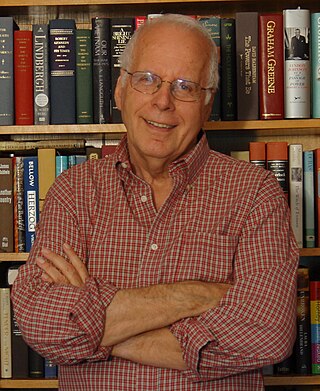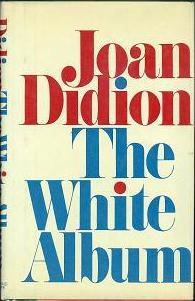
Charles Milles Manson was an American criminal, cult leader and musician who led the Manson Family, a cult based in California, in the late 1960s. Some of the members committed a series of at least nine murders at four locations in July and August 1969. In 1971, Manson was convicted of first-degree murder and conspiracy to commit murder for the deaths of seven people, including the film actress Sharon Tate. The prosecution contended that, while Manson never directly ordered the murders, his ideology constituted an overt act of conspiracy.

Prozac Nation is a memoir by American writer Elizabeth Wurtzel published in 1994. The book describes the author's experiences with atypical depression, her own character failings and how she managed to live through particularly difficult periods while completing college and working as a writer. Prozac is a trade name for the antidepressant fluoxetine. Wurtzel originally titled the book I Hate Myself and I Want To Die but her editor convinced her otherwise. It ultimately carried the subtitle Young and Depressed in America: A Memoir.

Joan Didion was an American writer and journalist. She is considered one of the pioneers of New Journalism along with Gay Talese, Hunter S. Thompson, and Tom Wolfe.
John Gregory Dunne was an American writer. He began his career as a journalist for Time magazine before expanding into writing criticism, essays, novels, and screenplays. He often collaborated with his wife, Joan Didion.

Susan Denise Atkins was an American convicted murderer who was a member of Charles Manson's "Family". Manson's followers committed a series of nine murders at four locations in California over a period of five weeks in the summer of 1969. Known within the Manson family as Sadie Mae Glutz or Sexy Sadie, Atkins was convicted for her participation in eight of these killings, including the most notorious, the Tate murders in 1969. She was sentenced to death, which was subsequently commuted to life imprisonment when the California Supreme Court invalidated all death sentences issued prior to 1972. Atkins was incarcerated until her death in 2009. At the time of her death, she was California's longest-serving female inmate, long since surpassed by fellow Manson family members Leslie Van Houten and Patricia Krenwinkel.

Charles Denton "Tex" Watson is an American murderer who was a central member of the "Manson Family" led by Charles Manson. On August 9, 1969, Watson, Patricia Krenwinkel, and Susan Atkins murdered pregnant actress Sharon Tate, Jay Sebring, Wojciech Frykowski, Abigail Folger, and Steven Parent at 10050 Cielo Drive in Benedict Canyon, Los Angeles. The next night, Watson traveled to Los Feliz, Los Angeles, and participated in the murders of Leno and Rosemary LaBianca. Watson was convicted of murder in 1971 and sentenced to death. As a result of a 1972 California Supreme Court decision on the constitutionality in the state of the death penalty, he avoided execution but has remained incarcerated ever since.

Emmanuel Carrère is a French author, screenwriter and film director.

Alexander Stille is an American author and journalist.

Michiko Kakutani is an American writer and retired literary critic, best known for reviewing books for The New York Times from 1983 to 2017. In that role, she won the Pulitzer Prize for Criticism in 1998.

Slouching Towards Bethlehem is a 1968 collection of essays by Joan Didion that mainly describes her experiences in California during the 1960s. It takes its title from the poem "The Second Coming" by W. B. Yeats. The contents of this book are reprinted in Didion's We Tell Ourselves Stories in Order to Live: Collected Nonfiction (2006).

Azadeh Moaveni is an Iranian-American writer, journalist, and academic. She is the former director of the Gender and Conflict Program at the International Crisis Group, and is Associate Professor of Journalism at New York University's Arthur L. Carter Institute of Journalism. She is the author of four books, including the bestselling Lipstick Jihad and Guest House for Young Widows, which was shortlisted for numerous prizes. She contributes to The New York Times, The Guardian, and The London Review of Books.
Lacey Fosburgh was an American journalist, author, and academic best known for her controversial book, Closing Time: The True Story of the Goodbar Murder (1977).
Kathryn Harrison is an American author. She has published seven novels, two memoirs, two collections of personal essays, a travelogue, two biographies, and a book of true crime. She reviews regularly for The New York Times Book Review. Her personal essays have been included in many anthologies and have appeared in Bookforum, Harper's Magazine, More Magazine, The New Yorker, O, The Oprah Magazine, and Vogue, Salon, and Nerve.

Where I Was From is a 2003 book by Joan Didion. It concerns the history and culture of California, where Didion was born and spent much of her life. The book combines aspects of historical writing, journalism, and memoir to present a history of California as well as Didion's own experiences in that state.

We Tell Ourselves Stories in Order to Live: Collected Nonfiction is a 2006 collection of nonfiction by Joan Didion. It was released in the Everyman's Library, a series of reprinted classic literature, as one of the titles chosen to mark the series' 100th anniversary. The title is taken from the opening line of Didion's essay "The White Album" in the book of the same name. We Tell Ourselves Stories in Order to Live includes the full content of her first seven volumes of nonfiction. The contents range in style, including journalism, memoir, and cultural and political commentary.
The non-fiction novel is a literary genre that, broadly speaking, depicts non-fictional elements, such as real historical figures and actual events, woven together with fictitious conversations and uses the storytelling techniques of fiction. The non-fiction novel is an otherwise loosely defined and flexible genre. The genre is sometimes referred to using the slang term "faction", a portmanteau of the words fact and fiction.

Robert Hilburn is an American pop music critic, author, and radio host. As critic and music editor at the Los Angeles Times from 1970 to 2005, his reviews, essays and profiles appeared in publications around the world. Hilburn has since written a memoir and best-selling biographies of Johnny Cash and Paul Simon. He was a member of the nominating committee of the Rock and Roll Hall of Fame for more than twenty years, and lives in Los Angeles.
The Tate–LaBianca murders were a series of murders perpetrated by members of the Manson Family during August 9–10, 1969, in Los Angeles, California, United States, under the direction of Tex Watson and Charles Manson. The perpetrators killed five people on the night of August 8–9: pregnant actress Sharon Tate and her companions Jay Sebring, Abigail Folger, and Wojciech Frykowski, along with Steven Parent. The following evening, the Family also murdered supermarket executive Leno LaBianca and his wife, Rosemary, at their home in the Los Feliz section of Los Angeles.

Lab Girl is a 2016 memoir by the American geochemist, geobiologist and professor Hope Jahren, published by Alfred A. Knopf. It is the recipient of the National Book Critics Circle Award for Autobiography, a New York Times notable book, winner of the American Association for the Advancement of Science prize for Excellence in Science Books, a finalist for the PEN/E.O. Wilson Literary Science Writing Award, and was named one of the Best Books of the Year by The Washington Post, Time, NPR, Slate, Entertainment Weekly, Newsday, Minneapolis Star Tribune and Kirkus Reviews.
This is a list of works by and on American author Joan Didion.














